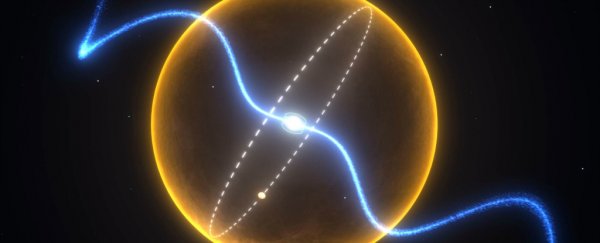This article was written by our partners over at Swinburne University of Technology, and was originally published on their Tumblr. We've reposted it with their permission.
Australian research is so much more than just fighting kangaroos and deadly spiders - the discoveries made by our scientists have far-reaching impacts on science, industry and society as a whole.
To celebrate Aussie science, Swinburne University of Technology has put together a list of some of the most significant discoveries made by their researchers in the past five years.
1. Discovery of the diamond planet
Swinburne researchers led by Matthew Bailes discovered a radio pulsar, PSR J1719-1438, the 'diamond planet'. So called because of its density's likeness to diamond, it is thought the diamond planet is all that remains of a once massive star.
2. Petabyte storage on a single disc
Min Gu and his research team have developed new technology that allows for up to one petabyte of data - the equivalent of 10.6 years worth of compressed high-definition video - to be stored on a single disc.
3. Table-top extreme UV laser heralds nanoscale imaging
Swinburne scientists found a way to image nanoscale structures in high resolution using an extreme UV laser system that fits on a table.
Swinburne researchers have shown the capacity of a technique using graphene oxide and complex laser physics to create a pop-up floating display without the need for 3D glasses.
5. Cosmic radio burst caught red-handed
Using CSIRO's Parkes radio telescope, PhD candidate Emily Petroff saw a ' fast radio burst' - a short, sharp flash of radio waves from an unknown source - happening live.
6. Efficiency breakthrough for state-of-the-art solar devices
Researchers at Swinburne's Centre for Micro-Photonics successfully synthesised one-dimensional graphenised carbon nanofibre to demonstrate an efficiency boost of 3.8 percent in silicon-based solar cells.
7. Einstein's 'spooky' theory may lead to ultra-secure internet
Researchers have found encrypted messages can be shared by many while keeping messages secure.
This post was originally published by Swinburne University of Technology. Read the original here.
